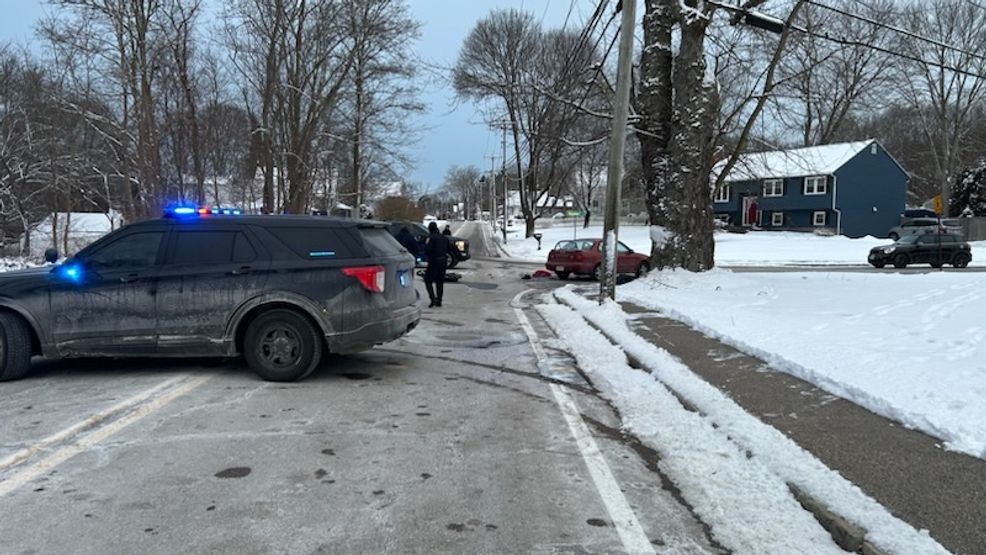Massachusetts is home to the nation’s oldest football rivalry, with the Thanksgiving tradition of Wellesley High School versus Needham.
“High school football in Massachusetts is a great tradition,” said Sean Conner, a parent and former Needham High School football player.
But some experts warn the players’ helmets, often designed for bigger NFL players, could be contributing to traumatic brain injury.
More than than a million kids play every week, according to the National Federation of High School Athletic Associations. Hundreds of them go to the emergency room every week with concussions.
But multiple concussions can lead to Chronic Traumatic Encephalopathy (CTE), a progressive degenerative disease of the brain connected to repetitive brain trauma, according to Boston University. In just three recent years, 20 boys have died of head injuries on football fields nationwide, according to the National Center for Catastrophic Sport Injury Research: Eight deaths in 2013, five in 2014 and seven in 2015.
Every tackle, every hit adds to a growing concussion crisis.
Many Pop Warner and high school football helmets have a sticker saying “NOCSAE certified.” And some parents see that as a marker of safety.
Local
In-depth news coverage of the Greater Boston Area.
But, according to court records, NOCSAE doesn’t differentiate between youth helmets and those designed for larger men. And some experts believe a helmet designed for an adult isn’t safe for a child with a developing brain.
Parent and youth sport safety advocate Kimberly Archie, of California, calls it “child abuse” for someone to repeatedly put a child in harm’s way.
Archie's son, Paul Bright, was a former football player who only played until high school. After he died, an autopsy revealed that he had CTE.
"Moms are the most powerful voice in youth sports,” she said.
Archie and another parent are suing Pop Warner and NOCSAE, saying that, like tobacco, the football industry has known the risk.
“They knew kids were being exposed to brain damage, they knew there was no standard for the helmet but they put a sticker on it and said they had one anyway,” Archie said.
NOCSAE, the National Operating Committee on Standards for Athletic Equipment, is based outside Kansas City, Missouri, and commissions research in sports medicine and science, disseminates information related to sports injuries, and develops voluntary performance standards for sports equipment based on that research, according to federal court documents.
But the organization still hasn’t created standards for youth football helmets, after talking about it for 20 years.
"The injury risk for youth isn't clear,” Mike Oliver, executive director of NOCSAE, said.
Dr. Steve Olvey is a neurosurgeon who advises IndyCar and NOCSAE. It took him a little more than a year to develop a standard for kids in motor sports.
“It does surprise me because to us - it felt like a no brainer,” he said of NOCSAE not having youth standards. “The data is there”.
Olvey said that, based on his team’s calculations, 600 to 700 high school football players go to the emergency room every week with concussions.
One of the biggest problems with football helmets on young players is the weight of the gear.
During a hit, heavier football helmets can create a bobblehead effect, launching the head of a young player whose neck is not as strong. Rather than moving back and forth, the head rotates. That rotation can injure the brain, and that type of injury happens to football players frequently.
A lighter helmet reduces the momentum of the head, and can reduce the likelihood the brain is injured in a collision with the inside of the skull.
“The heavier the helmet is the more angular acceleration you are going to have,” Olvey said, adding, “I would find the lightest weight helmet."
Most helmets weigh between 4 to 6 pounds and have a plastic outer shell.
But helmets made of carbon fiber and Kevlar, weighing half as much, are available, and the interior of some are designed like racing helmets to absorb and diffuse hits.
"The current Formula One helmet, for example, weighs only two pounds and has better impact protection than the current college or NFL helmet," Olvey said.
Researchers at Boston University say a high school football player takes 1,500 hits a season, more than an NFL player.
Indiana University quarterback Zander Diamont, a junior, played his last game at the Foster Farms Bowl on Dec. 28. He decided to quit football to prevent further brain injury.
“I need my brain,” he told The Indianapolis Star. “I’ve had a lot of concussions over the course of my career, a lot of which were in high school.”
“Why would a mom want to do more damage to their kid’s brain than their smart phone? You wouldn’t hit your smart phone 100-500 times a year,” Archie said. “Why would you let your kid hit their head that many times?”
She accuses schools and equipment companies of back room deals that budget with a child's brain as schools work to save money. A helmet manufacturer may offer to buy jerseys if a school district contracts with it for helmets, for example.
“There are often times deals between schools, coaches and manufacturers,” Archie said. “Typically there are only a handful of companies allowed in the door. They are often tied and bundled to other services.”
Massachusetts does limit the number of full contact practices for youth football. But schools here only are required to report head trauma, not concussions, to the state.
The Massachusetts Interscholastic Athletic Association did not return requests for comment.
In federal court filings, NOCSAE said its equipment standards are voluntary, and it is up to the equipment manufacturer, not NOSCAE, to make sure the helmets and other equipment comply.
Pop Warner said federal courts currently recognize that there is a “lack of scientific proof of causation for CTE claims.” And the organization’s player contract specifically warns that playing football can cause “serious injuries, paralysis, permanent disability and/or death.”



